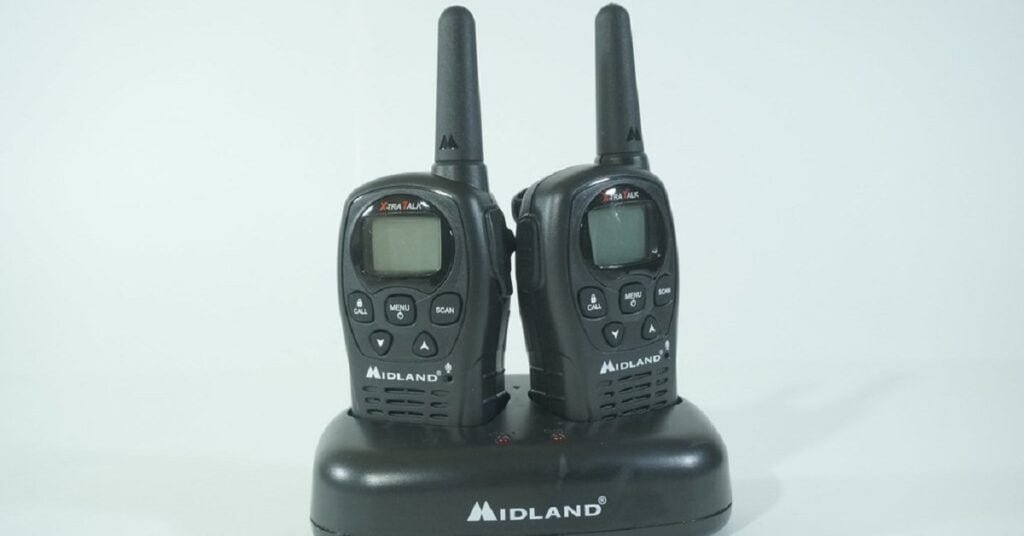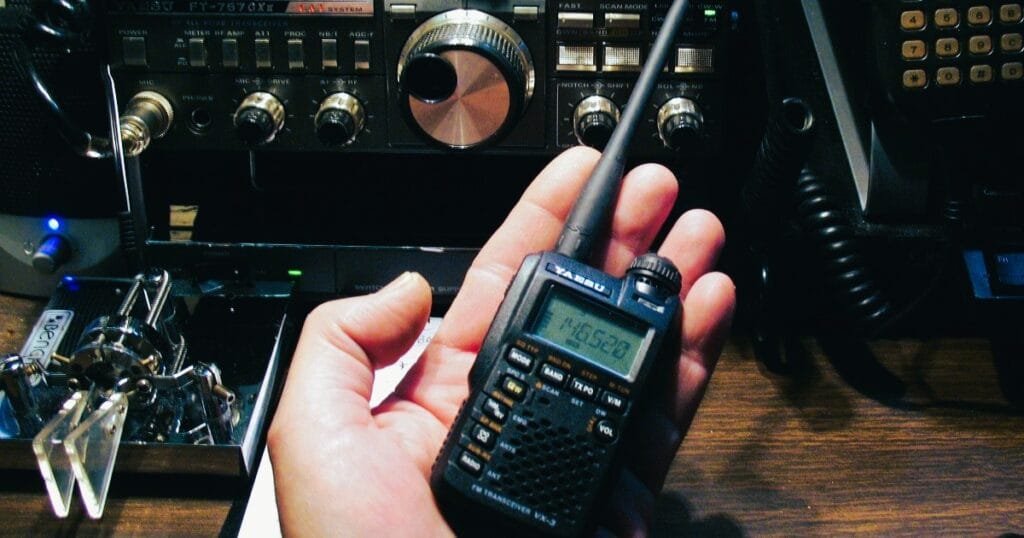Table of Contents
ToggleA Repair Review: My Walkie Talkies Are Not Charging. What to Do?
Think that: You are in a good mood and a very good day. You are just in your working station. You take your walkie-talkie which you already put in charge last night. And they should be ready to explore some radio communication with your ham buddies. You pull out your device and realize that it’s as dead as a doornail. Isn’t this frustrating? Well, you are not alone. Your most trusted piece of equipment, the walkie-talkies won’t charge. Even if you have read some more ham radio reviews or are new to this, trouble of charging may throw you off. But don’t sweat it — before you pronounce a funeral (dead out of launch), let’s examine why this may be happening and some things you can do about it.
1. Check the Power Source of Walkie Talkies
The first layer (and the least technical) is to identify and remove the root cause of concern. The absence of electricity flowing through the plug is one of the most frequent causes of your walkie-talkies not charging. The power supply might be faulty. Start by checking the outlet itself. You can try another device like your phone charger and see how it goes. If this doesn’t do the trick, then you have determined that your outlet is at fault, not your walkie-talkie. And can merely move onto a different power source. Some of the cases you would want an electrical expert to step in.
Also, check that your power strip/extension cord is functional and delivering uninterrupted electricity to each of your gadgets. But sometimes those are ignored and consumers think when their device is not working that it’s an issue with the actual item. Every ham radio review with charging issues has one piece of this advice to first check the simplest things before you start looking at your device.
2. Inspect the Charging Cable: A Hidden Culprit

The next possible issue is your charging cord. Cables wear out with time, and what appears to be a perfectly excellent chord may really have interior damage rendering it worthless. A defective charging cable is one of the most commonly ignored causes of charging problems. Look for evident signs of wear and strain, such as frayed edges, kinks, or bent connections. Perhaps tiny damage to the cable or plug, for example fraying, bending, or small rips, can drastically affect the charging process, potentially resulting in decreased charging speeds or perhaps the device not charging at all.
To rule out this option, use an alternative cable if one is available. If your walkie-talkies charge properly with a new cable, you’ve found the problem. It is not unusual for people to laud about their walkie-talkie in a ham radio review, only to realize that their charging issues were caused by a bad cable.
3. Check the Battery Contacts of Talkies

If the power supply and cable run, then take a gander inside your walkie-talkies. Your device charging has more to do with battery contacts (tiny metal pins inside the phone) than any other factor. In the course of time, these contacts can become dirty or dusty and sometimes even corrode because they cannot connect directly to the battery’s terminals. This might make your walkie-talkie too unresponsive even when it is plugged in.
Take time to check the battery connections. Are they unclean, rusted, or discolored? If this is the case, carefully wipe the afflicted areas with a cotton swab completely saturated in rubbing alcohol to ensure adequate disinfection and removal of any debris or accumulation. Gently clean the contacts until they are sparkly and clear of gunk. In many circumstances, a simple cleaning procedure will restore normal charging functionality. This approach is frequently cited in ham radio reviews by users who have encountered similar troubles with walkie-talkies that refuse to charge.
4. Test the Battery: Could It Be Time for a Replacement?
Battery Life: Batteries do not have infinite life and this may be an issue with the power back up of your gadget perhaps you are using a damaged battery or that is old enough to be replaced. Over time, and with lots of use, the battery in your device could simply be reaching its usable life.
First get a battery you know that works and see if the issue occurred with this battery. If the new battery works and charges correctly, then a replacement plan must be immediately put in place. The majority of walkie-talkies use either a pair of rechargeable lithium-ion batteries or you can put two disposable AA-standard ones there instead. Though rechargeable they degrade with use and aging, resulting in reduced performance over time. This is a common piece of advice in ham radio reviews too, especially with older stuff – check the health of that battery.
If you determine that swapping the electric battery is going to resolve it, very good on all of them. Follow the recommended batteries of the manufacturer to keep away trouble compatibility and security.
Confused about whether you need to buy a new battery pack? Click here and read this article before purchasing a new battery for your ham radio.
5. Examine the Charger: The Power Behind the Charge

While we’ve already covered the charging cord, it’s possible that the charger is the root cause. Chargers, like cables, can progressively wear out or malfunction as a consequence of repeated use, physical stress, or natural deterioration of its internal components, resulting in reduced performance or outright failure. A malfunctioning charger might provide the same symptoms as a damaged device: delayed or non-existent charging.
If feasible, use your charger with another device to see whether it is the source of the problem. For example, if you have another walkie-talkie or a similar device, try using the same charger. If it fails to charge the second device, the problem is definitely with the charger rather than the walkie-talkie. This is a typical worry raised in ham radio reviews when customers have problems using third-party chargers.
If you need to change the charger, be sure it fits the manufacturer’s standards for your walkie-talkie. Using off-brand or unsuitable chargers might cause device damage or possibly represent a safety concern.
6. Software Glitch: A Modern Problem for Modern Walkie-Talkies
It may sound strange, but even walkie-talkies may succumb to software flaws. Modern versions frequently incorporate internal software that manages operations like battery charging and power control. These systems can occasionally become glitchy, resulting in walkie-talkies that refuse to charge.
A soft reset can frequently fix minor software issues. To reset your walkie-talkie, go to the user manual for your individual model. In many circumstances, you must hold down several buttons at the same time for a few seconds. After the reset, put the gadget back in charge. If the problem was software-related, your walkie-talkie should begin charging normally again.
Although software-related pricing difficulties are uncommon, they do occur. Reading through ham radio reviews, you’ll occasionally come across people who faced difficulties that might be readily resolved by executing a reset. Sometimes a simple reboot is all that is required to remedy your charging issues.
7. The Worst-Case Scenario: Faulty Internal Components

After trying all of the above, if your walkie-talkie is still not charging then there could be some internal component that has fallen. The walkie-talkie may have an internal failing of some kind, such as poor electronics or connections. These challenges are less apparent in the source code and you may need an expert to show where these problems can manifest and how they can be fixed.
The thing to do, considering these cases, may probably seek a professional diagnosis of it on the walkie-talkies. It may be cheap or perhaps more reasonable to buy another one than repairing this in regard to the cost concerning its age and what may replace it. However, such a situation is very distressing but quite usual and is faced by many people in similar circumstances. It may be that, as many ham radio reviews indicate, some of the models manufacture problems over time that it becomes either too expensive or complicated to fix.
8. Battery Calibration: An Overlooked Fix
Many people forget about battery calibration as well. If calibration is off, the percentage of charge becomes incorrect. For battery calibration, charge the battery in full and hard use it until it is out of juice. Then you will need to charge the battery to full again. This gives the internal software a better understanding of what the real capacity of the battery is. Calibration issues are very rare but can cause a lot of confusion with charging and are seldom discussed in ham radio reviews for the troubleshooting of strange charging anomalies.
Already decided to buy a new battery? Don’t buy randomly. Check here to find the best choice for your outdoor ham radio. This article will guide you to the best value for your money.
9. Environmental Factors: Could Temperature Be the Issue?
Environmental conditions also play a role in the functionality of your devices charging. The over temperature extremes (both hot and cold) can also interrupt the charging process. Do not leave them in direct sunlight or very cold weather because the battery will suffer an immediate capacity loss to charge your phone.
Lithium-ion batteries are especially temperature dependent. Try transferring your walkie-talkie to a room-temperature setting to see if it starts charging correctly. You’d be shocked how many ham radio reviews include temperature-related difficulties when consumers report walkie-talkie batteries not charging after being exposed to harsh weather conditions.
So, can we use our walkie-talkie in bad weather? Check here for detailed information.
Final Thoughts: The Road to Functional Walkie-Talkies
When your walkie-talkie fails to charge, it may be an unpleasant and perplexing situation. However, before you replace your equipment, go through the following troubleshooting procedures. Often, the problem is simple—a poor outlet, a worn-out cable, or filthy battery contacts—and may be readily fixed at home. Even current bugs or temperature extremes can create charging issues, which are easily remedied with a little patience and study.
By following this detailed advice, you should be able to resolve your charge issue without too much difficulty. If everything else fails, expert repair services are available for more significant interior hardware issues. Regardless, fixing charging difficulties can help you maintain your walkie-talkie in good condition and ready for the next excursion.
In the end, your walkie-talkie is a trustworthy partner. As most ham radio reviews highlight, most charging issues have simple fixes, and with proper maintenance, your gadget may continue to serve you for years.


